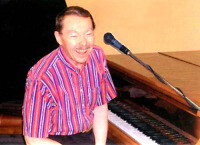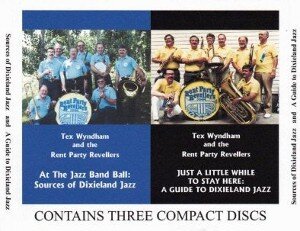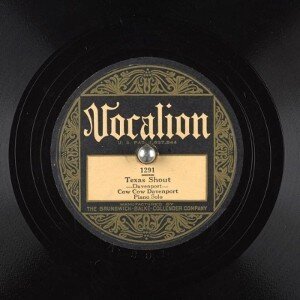 Set forth below is the forty-second “Texas Shout” column. It first appeared in the August 1993 issue of West Coast Rag now The Syncopated Times. I have added a link to the publisher in the few cases where a title is still in print, for out of print books you may seek out the seller of your choice.
Set forth below is the forty-second “Texas Shout” column. It first appeared in the August 1993 issue of West Coast Rag now The Syncopated Times. I have added a link to the publisher in the few cases where a title is still in print, for out of print books you may seek out the seller of your choice.
This is the fourth, and probably last, in a number of “Texas Shouts” dealing with Dixieland and ragtime publications. The February 1991 column covered books analyzing the music. February 1992, popular histories. February 1993, periodicals. Today, references.
Nearly any book about our music can be used as a reference on some point or other. Thus, let’s start out by defining terms.
For today’s purposes, a “reference” is a book like a telephone directory or dictionary. That is, a significant portion, maybe all, of its text is not meant to be read front to back, but to be dipped into when the need arises to settle some point or other.
As with the previous columns, the fact that I do not mention a particular publication is not intended to be a slight. I have only encountered a fraction of the many books about Dixieland, ragtime and related music. However, readers who are interested in getting deeper into the subject may get a helpful starting point from knowing about some volumes which I have found particularly useful over the years.
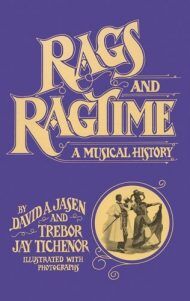 Out of the small shelf of ragtime references, I find myself referring most often to Rags And Ragtime: A Musical History, by David A. Jasen and Trebor Jay Tichenor. It is a checklist of rags, including copyright date and original publisher, together with capsule biographies of the best-known ragtime composers.
Out of the small shelf of ragtime references, I find myself referring most often to Rags And Ragtime: A Musical History, by David A. Jasen and Trebor Jay Tichenor. It is a checklist of rags, including copyright date and original publisher, together with capsule biographies of the best-known ragtime composers.
Capsule biographies are all you’ll find in Who’s Who In Jazz, by John Chilton, and The New Edition Of The Encyclopedia Of Jazz, by Leonard Feather. My copy of the latter is dated 1960, but I believe that there has been an update since.
If you are particularly interested in biographies of New Orleans musicians, seek out New Orleans Jazz: A Family Album, by Al Rose and Edmund Souchon and Jazz New Orleans, 1895-1963, by Samuel B. Charters. I understand that an updated edition of the latter is being prepared as I write these words.
Books two and three of The Complete Encyclopedia Of Popular Music And Jazz 1900-1950, by Roger D. Kinkle, consist of biographies of jazz artists, along with those of popular composers and performers. This four-volume work is also valuable for locating the year and composers of hit songs during the period covered.
For the serious collector of jazz recordings, the most essential reference work is some kind of discography. A discography will not only provide vital information about the records in your collection but will also furnish you with data indispensable in locating missing items.
A discography is simply a list of recordings on a given topic. In its most common format, it will catalog in chronological order all of the known recordings on its subject, giving, for each title, the date and city of recording, the artist credit as it appears on the label, the complete personnel and which instrument (or vocal) was played by which person, the master number (including alternate and rejected takes) and the label and catalog number of at least the original issue of the side (and sometimes of reissues).
A common variant on the discography is the bio-discography. This type of reference concentrates on one artist, one band or one geographic area, including a narrative text that furnishes pertinent background on the subject as background for the discographical piece of the work. In many cases, the accompanying text concentrates on recordings and slides over portions of the subject that did not involve recordings.
A convenient break point for older-style discographies is the early 1940s. First, there was a recording ban in the U.S. imposed by the union during that period, so that, for a while, there is a gap in the number of commercially issued recordings. Second, prior to that time, home ownership of recording equipment was uncommon, so that a reasonably comprehensive picture can be obtained from examining commercial recordings and the files of commercial recording companies. Third, substantially all commercial recordings (except electrical transcriptions designed for radio broadcast) were two-sided 78 rpm platters, so that the complexities of LPs, audiocassettes and CDs, with many performances on one release, are not encountered.
Today, the jazz discographer faces a nearly hopeless, never-ending task. Everyone owns small, hand-held recording equipment. Almost every note played by a jazzman in public these days has been recorded by someone and exists somewhere, albeit in possibly execrable fidelity. (See: Texas Shout #6: Hand-Held Live Tapes)
Further, it has become normal for jazz artists to release their own recordings, often made at home on such equipment, in limited editions of 500 or 1000 copies on private labels. Such albums may sell out completely without ever coming to the attention of the larger jazz community of which discographers are a part.
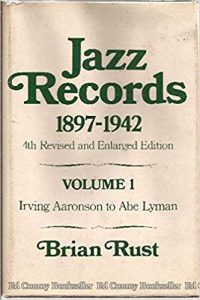 The standard discography for vintage jazz is Jazz Records 1897-1942, by Brian Rust. This essential work is published in two volumes by Storyville Publications and Co., Ltd., 66 Fairview Drive, Chigwell, Essex, England IG7 6HS. (Storyville Publications is a prominent publisher of discographies of music from the Dixieland and ragtime years. In the remainder of this column, I will indicate by “(Storyville)” any book mentioned which is one of its publications.)
The standard discography for vintage jazz is Jazz Records 1897-1942, by Brian Rust. This essential work is published in two volumes by Storyville Publications and Co., Ltd., 66 Fairview Drive, Chigwell, Essex, England IG7 6HS. (Storyville Publications is a prominent publisher of discographies of music from the Dixieland and ragtime years. In the remainder of this column, I will indicate by “(Storyville)” any book mentioned which is one of its publications.)
The current postpaid price of the 5th and latest (1982) edition of Rust, which may change before this column appears in print, is $97, and it is worth every penny. As a record reviewer of such material, I have felt it necessary to pony up for each successive revision upon publication, and I’ve never been sorry.
Brian Rust is, without question, the dean of discographers of the early jazz years. In the course of his studies, he has accumulated considerable knowledge of records of related music, much of which he has published in separate volumes. These include discographies of British dance bands (co-authored with Sandy Forbes), American dance bands and entertainment figures, plus volumes on American record labels, Victor’s electrical 78s and the science of discography.
A number of efforts have been made to bring Rust’s research up to more recent times. In a series of eight flimsily-bound paperbacks, now out of print, Jorgen Grunnet Jepsen made the first pass at the period from 1942 to the mid-1960s, producing a generally useful work which also foretold only too clearly that discographies covering the years of privately produced small-label recordings and widespread home recording equipment were going to be much less complete and accurate than had previously been the case.
W. Bruyninckx has collated Rust with research on later recordings and has reorganized jazz stylistically to produce a series of discographies that cover jazz from its origins through the late 1980s. His series labeled Traditional Jazz includes five paperback volumes and an index, and is subject to the usual classification difficulties encountered in trying to pigeonhole jazzmen (does an artist belong in the “Swing” or the “Traditional” category?).
For better or worse, among the available options, I’ve elected to go with the discographies currently being authored by Erik Raben, covering jazz records from 1942 to 1980. Six volumes of this somewhat pricey hard-cover series have appeared at this writing.
Virtually every figure of the twenties and thirties who is fondly enough remembered to have his/her records reissued with any frequency has been the subject of a bio-discography. In the second of these four columns, I recommended the one which best transcends the limitations of the genre and is an engrossing read on its own, Bix: Man And Legend, by Richard M. Sudhalter and Philip R. Evans with William Dean-Myatt.
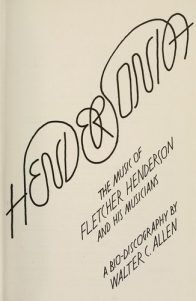 However, as far as I know, the most staggering bio-discography of them all, the Mount Everest for later entrants in the field, is the incredible Hendersonia: The Music Of Fletcher Henderson And His Musicians, by Walter C. Allen. This unbelievable monument to years of meticulous research, now out of print (I think), includes every conceivable fact that anyone would want to know about Henderson, his recordings, his sidemen, his compositions, etc., etc.
However, as far as I know, the most staggering bio-discography of them all, the Mount Everest for later entrants in the field, is the incredible Hendersonia: The Music Of Fletcher Henderson And His Musicians, by Walter C. Allen. This unbelievable monument to years of meticulous research, now out of print (I think), includes every conceivable fact that anyone would want to know about Henderson, his recordings, his sidemen, his compositions, etc., etc.
Other bio-discographies on my shelves that have proved highly useful deal with Fats Waller (“Fats” In Fact), by Laurie Wright (Storyville); James P. Johnson: A Case Of Mistaken Identity, by Scott E. Brown with a discography by Robert Hilbert; Turk Murphy, Just For The Record, by Jim Goggin; Clarence Williams, by Tom Lord (Storyville); Jelly Roll Morton (Mr. Jelly Lord), by Laurie Wright (Storyville); the Original Dixieland Jazz Band and the quintets who modeled themselves after the ODJB (The Fabulous Fives), by Horst H. Lange, revised by Ron Jewson, Derek Hamilton-Smith & Ray Webb (Storyville); McKinney’s Cotton Pickers (McKinney’s Music), by John Chilton; The Jazz Legacy Of Don Ewell, by John Collinson and Eugene Kramer, with seventeen piano transcriptions by Ray Smith (Storyville); and Bob Crosby’s Bob Cats and big band (Stomp Off, Let’s Go), by John Chilton.
Title and composer credits from the original 78s can be most useful to a collector, particularly if the tunes were never published or are rare in published form. The Paramount 12000/13000 Series, by Max E. Vreede (Storyville) and Columbia 13/14000-D Series, by Dan Mahony include many vintage 78s of interest to fans of our music.
If you’re into uptown New Orleans, you might try to find a copy of New Orleans, The Revival, by Tom Stagg & Charlie Crump. West Coast revival buffs would prefer Jazz West: 1945 to 1985, by K.O. Eckland or maybe even Jazz On The Barbary Coast, by Tom Stoddard (Storyville).
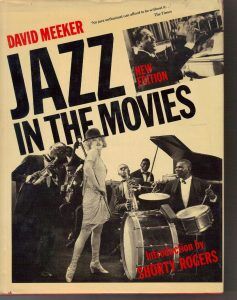 The list goes on. Some of the references in our field are highly specialized, if not esoteric. How about German Ragtime & Prehistory Of Jazz, by Rainer E. Lotz (Storyville)? QRS piano rolls (The Billings Rollography), by Ginny and Bob Billings? Jazz In The Movies, by David Meeker? Where the names of some of the early jazz tunes came from (Tell Your Story, by Eric Townley (Storyville))? Spike Jones (Thank You, Music Lovers, compiled by Jack Mirtle)?
The list goes on. Some of the references in our field are highly specialized, if not esoteric. How about German Ragtime & Prehistory Of Jazz, by Rainer E. Lotz (Storyville)? QRS piano rolls (The Billings Rollography), by Ginny and Bob Billings? Jazz In The Movies, by David Meeker? Where the names of some of the early jazz tunes came from (Tell Your Story, by Eric Townley (Storyville))? Spike Jones (Thank You, Music Lovers, compiled by Jack Mirtle)?
Whatever your particular interest in jazz may be, there almost certainly has been a reference written about it. These are available, in most cases, only from specialty dealers and will not be found on the shelves of your local book store.
While some of the books listed above are out of print, specialty dealers may well have either used copies or new ones that have been sitting unpurchased on their shelves for years. Thus, it can’t hurt to ask about something you really want.
As you find your area of special interest within our music, and begin delving more deeply into it, you will discover that you need a reference work about it – both to help you keep track of what you’ve already located and to put you on the right track for the rest of it. If you’re truly serious about this pursuit, you might as well spring for a reference now and make life easier for yourself as you go forward.
You’ll also find, I think, that you’re having more fun along the way and, as you accumulate more knowledge about the music and its players, enjoying it more – which is what Dixieland and ragtime, in the last analysis, is all about. Good luck.
The following note was added to a reprint of this column in September 2001.
If there ever was an updated edition of Jazz New Orleans, as I expected when I wrote the column, I am not aware of it. I believe that Jazz On The Barbary Coast has since been incorporated into a larger, more expansive revised volume with a different title.
Since 1993, Roger Kinkle has issued a fifth volume of his encyclopedia updating the capsule biographies therein. Erik Raben’s discographical project seems to have stalled early in the alphabet, but discographer Tom Lord is nearing completion of his monumental over-twenty-volume jazz recording discography which, of course, covers Dixieland as well as all other jazz types from the first recordings right up to publication date.
Books about ragtime, older-style jazz and their players, still of highly variable quality, continue to appear with satisfying regularity. Since writing this column, among the ones I have acquired, not all of which have yet been read, are: Louis Armstrong: An Extravagant Life, by Lawrence Bergreen; Tram: The Frank Trumbauer Story, by Philip R. Evans and Larry F. Kiner; Pee Wee Russell: The Life Of A Jazzman, by Robert Hilbert; A Life In Ragtime: A Biography Of James Reese Europe, by Reid Badger; Chicago Jazz; A Cultural History, 1904-1930, by William Howland Kenney; Hot Man: The Life Of Art Hodes, by Art Hodes and Chadwick Hansen; The Rise Of Gospel Blues: The Music Of Thomas Andrew Dorsey In The Urban Church, by Michael W. Harris; Lost Chords: White Musicians And Their Contributions To Jazz, 1915-1945, by Richard M. Sudhalter; Giant Strides: The Legacy Of Dick Wellstood, By Edward N. Meyer; Ding! Ding!: A Bio-Discographical Scrapbook On Vic Dickenson, by Manfred Selchow; Lightning Fingers: Billy Mayerl – The Man And His Music, a symposium edited by Michael Harth; Bix: The Leon Beiderbecke Story, by Philip R. and Linda K. Evans; Spreadin’ Rhythm Around: Black Popular Songwriters, 1880-1930, by David A. Jasen and Gene Jones; That American Rag: The Story Of Ragtime From Coast To Coast, by David A. Jasen and Gene Jones; Boogie Woogie Stomp: Albert Ammons & His Music, by Christopher I. Page; The Wildest One: The Life Of Wild Bill Davison, by Hal Willard; Back Beats And Rim Shots: The Johnny Blowers Story, by Warren W. Vache, Sr.; Nothing But The Blues: The Music And The Musicians, edited by Lawrence Cohn: “Oh, Mister Jelly”: A Jelly Roll Morton Scrapbook, compiled by William Russell and The Red Nichols Story: After Intermission, 1942-1965, by Philip R. Evans, Stanley Hester, Stephen Hester and Linda Evans.
Further, George Buck, owner of G.H.B./Jazzology Records, has established Jazzology Press, which issues well-illustrated trade paperbacks about our music, each incorporating a CD that deals with the book’s subject. All are worth the price, but I would particularly draw your attention to: Bill Russell’s American Music, compiled and edited by Mike Hazeldine; Muggsy Spanier: The Lonesome Road, by Bert Whyatt; and Jess Stacy, The Quiet Man Of Jazz, by Derek Collier.
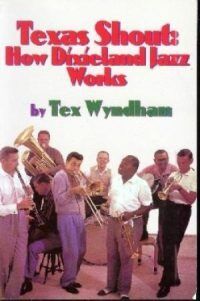
The full run of “Texas Shout” has been collected into a lavishly illustrated trade paperback entitled Texas Shout: How Dixieland Jazz Works. This book is available @ $20.00 plus $2.95 shipping from Tex Wyndham, On request, Tex will autograph the book and add a personalized note (be sure to tell him to whom the note should be addressed).
Tex Wyndham’s 3 CD Guide to Dixieland with music and commentary is available for $20 plus $2.95 shipping. The separate CD, A History of Ragtime: Tex Wyndham Live At Santa Rosa, is available for $13.00 plus $2.00 shipping. On request, Tex will autograph the inner sleeve and add a personalized note (be sure to tell him to whom the note should be addressed).
Send payment to Tex Wyndham, P.O. Box 831, Mendenhall, PA 19357, Phone (610) 388-6330.
Note: All links, pictures, videos or graphics accompanying the Shouts were added at the discretion of the Syncopated Times editorial staff. They did not accompany the original columns and do not necessarily reflect the opinion of Tex Wyndham.
From roughly 1970-2010, Tex Wyndham was: (1) one of the best-known revivalist Dixieland jazz musicians in the US, as cornetist, pianist and bandleader, (2) one of the best-known ragtime pianists in the US, and (3) one of the most respected critics in the US of Dixieland jazz, ragtime, and related music. He is the only person about whom all three of those statements can be made.

